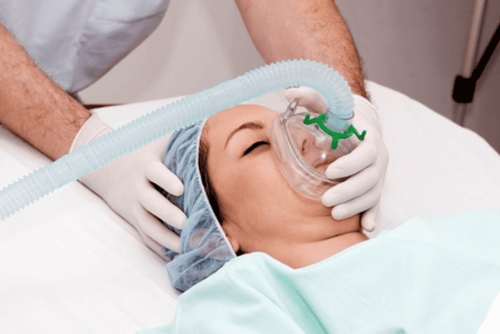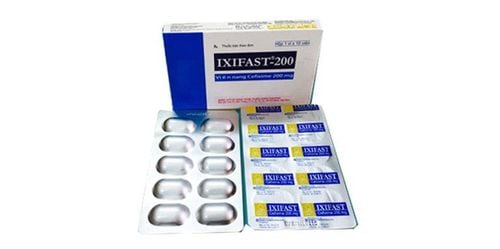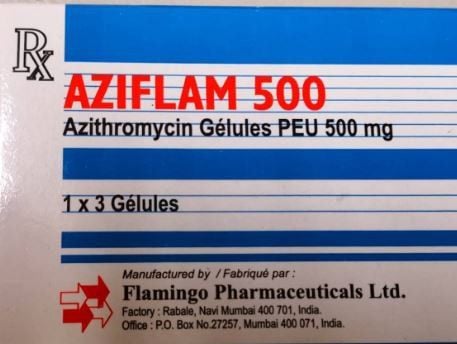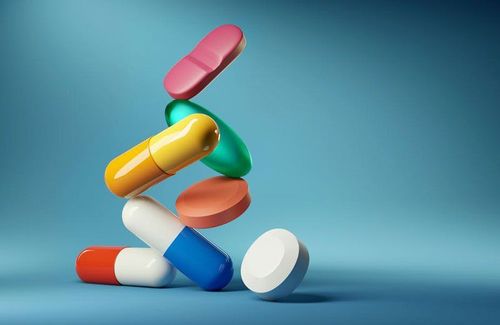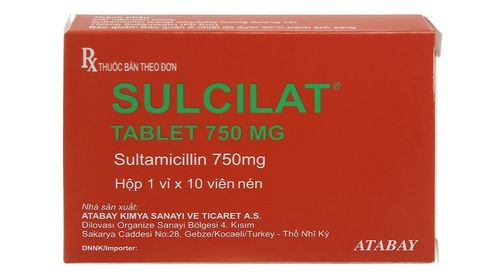This is an automatically translated article.
Marapan is classified as an antibiotic with antibacterial effect, killing bacteria in some infections caused by Gram-negative and Gram-positive bacteria. Refer to some information about Marapan in the article below that will help you know how to use the drug appropriately.
1. What is Marapan?
Marapan is an antibiotic with the main ingredient being Cephalexin, belonging to the 1st generation Cephalosporin group. According to data from the manufacturer, Marapan is made in capsule form, with the antibiotic content of Cephalexin in 1 tablet is 500mg. , with sufficient excipients. A box of Marapan antibiotics contains 10 blisters, each blister contains 10 tablets.
2. Uses of Marapan
With the main active ingredient is Cephalexin, Marapan has antibacterial spectrum mainly of Gram-positive and Gram-negative strains. Cephalexin kills bacteria by inhibiting the synthesis of the cell envelope of pathogenic bacteria, causing the bacterial daughter cells to be born without walls and unable to survive in the environment to continue the replication cycle. next.
In terms of antibacterial effect, Marapan is very stable to Staphylococcus penicillinase, so it is resistant to these strains. In vitro, Marapan is effective against the following strains of bacteria: coagulase (+), coagulase (-) and penicillinase-producing Staphylococcus strains, beta-hemolytic Streptococcus, a few strains of Escherichia coli, Streptococcus pneumoniae, Proteus mirabilis, Klebsiella spp. In strains of Shigella, Haemophilus influenzae, Marapan has antibacterial effect but is not effective.
Pharmacokinetics of Marapan:
With a capsule formulation, Marapan is completely absorbed from the gastrointestinal tract and reaches peak plasma concentrations of patients 1 hour after oral administration with a dose of 500mg, concentrations measured through food. test was 18 micrograms/ml.
Although it is taken orally, the timing of taking Marapan is very important as food, if taken with the drug, can slow down the absorption of the drug.
15% of a dose of Marapan is bound to the patient's plasma proteins. The half-life in plasma in patients without kidney disease is 30 minutes - 75 minutes, in children is 5 hours, in patients with kidney disease this time will be longer.
Marapan is widely distributed in fluids and tissues, but not much in cerebrospinal fluid, in the mammary glands of lactating women, Marapan is excreted into milk in relatively low concentrations.
Marapan is mainly excreted in the urine (80%) as unchanged drug within 6 hours of dosing, with a small part of Marapan eliminated at therapeutic concentrations in the bile. In addition, Marapan can be eliminated by hemodialysis or peritoneal dialysis (from 20% to 50%).
3. Indications for taking Marapan
Marapan antibiotics are indicated in the treatment of infections caused by susceptible bacteria of medium and mild form:
Treatment of respiratory tract infections: Acute and chronic bronchitis, infectious bronchiectasis. Treatment of ENT infections: otitis media, mastoiditis, sinusitis, purulent tonsillitis, pharyngitis. Treatment of urinary tract infections: Cystitis, prostatitis, prophylaxis of recurrent urinary tract infections. Treatment of gynecological and obstetric infections. Treatment of skin, soft tissue and bone infections. Treatment of patients with gonorrhea when penicillin antibiotics are not suitable. Treatment of infections in the oral cavity.
4. Contraindications to taking Marapan
Do not use Marapan for patients with a history of allergy, hypersensitivity to Cephalosporin antibiotics. Contraindicated in patients with a history of anaphylaxis to penicillins, globulin mediated reactions, IgE immunity.
5. Dosage and how to use Marapan
How to use: Marapan drug is taken orally, the patient takes the drug 1 hour before meals with a full glass of water.
Dosage of Marapan in adults: 500mg - 1000mg/time, 2 consecutive doses at least 6 hours apart. Dosage of Marapan in children: 25-50mg/kg body weight/day, divided into 4 oral doses. In severe infections, the dose should be doubled. Dosage in case of pharyngitis and cystitis: 1000mg/time, twice a day. Dosage in the treatment of gonorrhea: 3000mg + 1g Probenecid in men and 2000mg + 0.5g Probenecid in women (Probenecid is a drug that prolongs the elimination time of Marapan drug in the body, helps increase the serum concentration of Marapan drug from 50% to 100%). For the treatment of bacterial infections, the recommended duration of use of Marapan is from 7 days to 10 days, if severe, it must be treated with Marapan for 2 weeks.
6. Side effects of the drug Marapan
Marapan drugs cause some side effects in the body systems, specifically as follows:
Whole body: Patients feel headache, dizziness, rarely anaphylactic reactions. Gastrointestinal: Commonly diarrhea, nausea, rarely gastrointestinal disorders, colitis. Skin: Rash, itching. Hepatic: Increased liver transaminases, rarely cholestatic jaundice. Blood: Decreased neutrophils, platelets (rare). Genitourinary system: Vaginitis, interstitial nephritis, vaginal itching, penis. Cases of side effects when taking Marapan drugs can cause serious consequences, whether the effects are mild or severe. Therefore, when experiencing the above side effects, you should stop taking Marapan and notify your doctor for timely intervention.
7. Note the use of drugs Marapan
Should meet the drug treatment time enough for the drug to promote its full antibacterial effect, avoiding the case of drug resistance later. When taking Marapan, it is possible to cause false Coomb's test (+) and false glucose in urine (+) in the trial with Benedict, Fehling or with the Clinitest tablet. In patients with renal and hepatic impairment, hematopoietic, renal, and hepatic function should be closely monitored during long-term therapy. There have not been many studies on the safety of Marapan during pregnancy, so avoid using Marapan in this population. Marapan is a first-generation cephalosporin antibiotic used in the treatment of mild to moderate infections. Marapan is a prescription drug, so patients should not use it on their own, but need to take it as prescribed by a doctor to achieve the best treatment effect.




